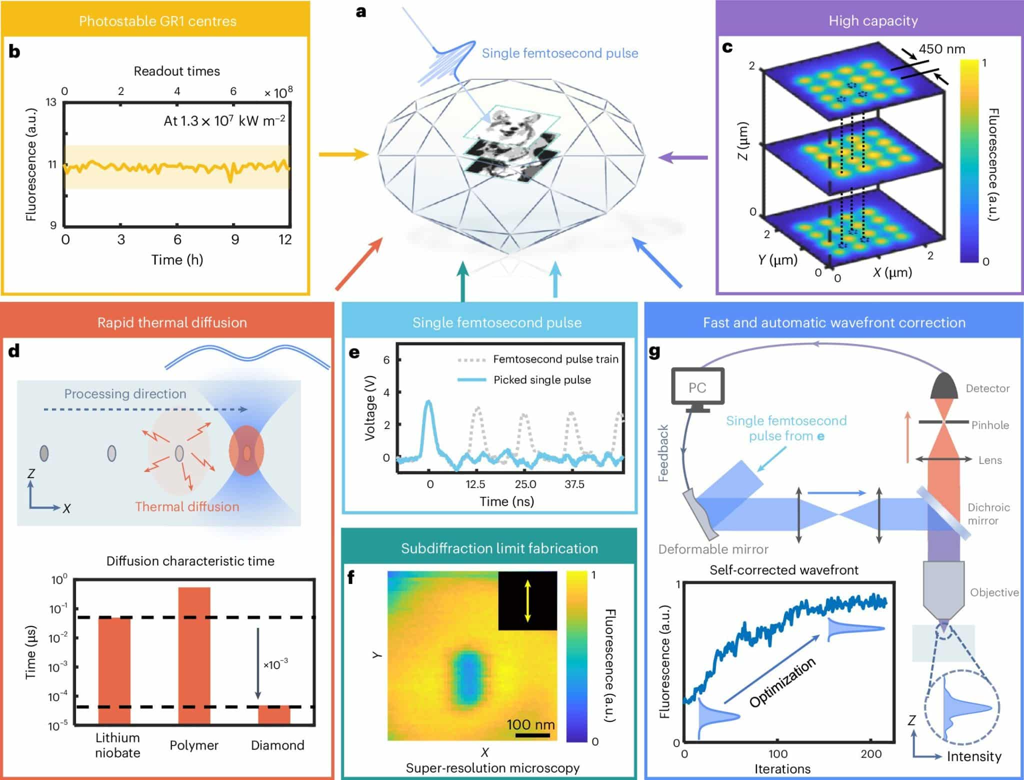Physicists have tightly packed data into diamonds for millions of years.
Information carriers, such as hard HDD and SSD drives, flash drives, and optical discs, have a limited lifespan. Over time, the data stored on them may become inaccessible due to material degradation, accumulation of errors, or device failures. For instance, CD, DVD, and Blu-ray discs can become unreadable due to scratches and moisture exposure, while flash drives and hard disks may lose data due to mechanical failures, electronic malfunctions, or frequent overwriting.
It is advisable to regularly rewrite or copy important data onto new media to prevent loss. There is also the issue of losing access to data due to technological obsolescence—devices capable of reading old formats may simply vanish from the market.
Humanity seeks to securely store critically important information, which is why scientists are continuously developing durable solutions for its preservation. One option is crystalline storage media that can retain data for thousands of years.
Researchers have already demonstrated the ability to record data in diamonds. This offers significantly longer information retention compared to hard drives and paper. However, in previous experiments, scientists struggled to achieve high data density on this expensive medium.
In a study published in the journal Nature Photonics, a research group developed a method for engraving data onto diamonds, which allows for a substantial increase in storage density, thus enabling a greater volume of data to be recorded on the crystal.
For their experiments, the scientists used diamond pieces measuring a few millimeters—this is currently a demonstration project, a proof of concept for the methodology. According to the researchers, in the future, such media could be produced in the size of a Blu-ray disc.
The new method employs a laser that removes individual carbon atoms from the diamond's surface, creating tiny cavities. When illuminated by another laser, these cavities exhibit a precisely defined brightness level that can be read.

By controlling the laser's energy, the scientists can adjust the brightness of specific areas of the diamond by removing varying amounts of atoms. The reading laser detects the brightness of each area, and based on this data, the researchers decode the information.
In a series of experiments, the team encoded images onto a small diamond plate. The accuracy of the write-read cycle was 99 percent. The data recording density reached 14.8 terabits per cubic centimeter. Fast recording is facilitated by a femtosecond laser, and the stability of diamond crystals suggests that the data will be preserved in this medium for millions of years.
The researchers acknowledge that at this stage, their method cannot be considered economically viable due to the high cost of the laser used to create the cavities. Nevertheless, they believe that the technology may find applications in areas where ultra-reliable data storage is required.